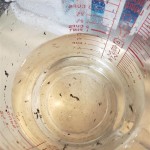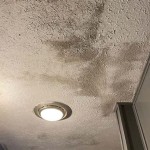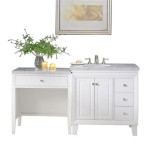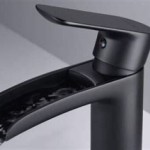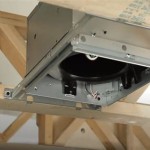Mobile Home Bathroom Sink Plumbing Diagram: A Guide to Understanding the System
Mobile home bathroom sink plumbing, like any other plumbing system, requires a thorough understanding of its components and their interconnectedness. This article provides a comprehensive guide to the typical plumbing diagram of a mobile home bathroom sink. It will delve into the essential parts, their functions, and how they work together to ensure proper water flow and waste disposal.
1. Components of the Mobile Home Bathroom Sink Plumbing System
The plumbing system for a mobile home bathroom sink involves a series of interconnected components that facilitate the supply of clean water and the disposal of wastewater. The key elements include:
- Water Supply Line: This line brings cold water from the main water source to the sink faucet. The water supply line is typically made of copper, PVC, or PEX piping.
- Faucet: The faucet controls the flow of water from the supply line to the sink basin. Faucets can be single-handle or double-handle, depending on the design.
- Drain: The drain is the primary pathway for wastewater to exit the sink basin. This is typically a metal pipe connected to the sink's drainpipe.
- P-Trap: This crucial component is a curved pipe located beneath the sink, preventing foul odors from the sewer system from rising back into the home. The P-trap holds a small amount of water, creating a seal.
- Drainpipe: This pipe carries wastewater from the P-trap to the main sewer line. It is often made of PVC or ABS pipe.
- Vent: The vent pipe is essential for maintaining proper air pressure within the plumbing system. It connects to the drainpipe and extends above the roofline, allowing air to enter the system and prevent vacuum formation.
- Waste Valve: This valve is located on the drainpipe and allows for easy access to clear clogs or blockages in the drain line.
2. Function of the Mobile Home Bathroom Sink Plumbing System
The mobile home bathroom sink plumbing system relies on a combination of gravity and water pressure to facilitate water flow and waste disposal. When the faucet is turned on, water pressure from the main water supply line pushes the water through the faucet to the sink basin. The drain carries the used water away from the sink, first through the P-trap, then through the drainpipe, and finally into the main sewer line. The vent pipe ensures that air can flow into the system, preventing negative pressure that could impede the proper flow of wastewater.
3. Common Plumbing Issues and Troubleshooting
Like any plumbing system, the mobile home bathroom sink plumbing can experience issues. Common problems include:
- Clogged Drains: Clogs can form in the drainpipe or the P-trap due to hair, soap scum, or other debris.
- Leaking Faucets: A leaking faucet can result from worn-out O-rings, washers, or cartridges.
- Slow Drains: Slow drains can be caused by partial clogs or a buildup of grease and grime.
- P-Trap Issues: If the P-trap is dry, it may allow sewer gases to enter the home.
- Vent Blockage: A blocked vent can lead to pressure imbalances and drainage issues.
Troubleshooting these issues often involves simple solutions like clearing clogs with a plunger or drain snake, replacing worn-out faucet parts, or checking the vent pipe for blockages. However, for complex problems, it's best to consult with a licensed plumber.
4. Importance of Maintaining the Plumbing System
Maintaining the mobile home bathroom sink plumbing system is crucial for its longevity and efficiency. Regular maintenance practices can help prevent major plumbing problems and ensure the system operates smoothly. Some essential maintenance tips include:
- Regular Cleaning: Clean the sink basin and faucet regularly to prevent soap scum buildup.
- Prevent Clogs: Avoid pouring grease or hair down the drain, as these can lead to clogs.
- Inspect for Leaks: Check for leaks around the faucet, drainpipe, and P-trap.
- Vent Inspection: Make sure the vent pipe is unobstructed and extends above the roofline.
- Professional Inspections: Schedule professional plumbing inspections at least once a year for thorough checks and preventative maintenance.
By understanding the components, function, and potential problems of a mobile home bathroom sink plumbing system, homeowners can better diagnose and address issues promptly. This knowledge also empowers them to perform basic maintenance tasks, contributing to the smooth operation and longevity of their plumbing system.

Plumbing Repairs How To Repair Fix It Diy Install Bathroom Sink

Mobile Home Plumbing Guide Living Kitchen Sink Diy

Pin On Mobile Home Plumbing

Ask An Expert About Mobile Home Venting Issues Bathroom Plumbing Bathtub Shower

Mobile Home Plumbing Guide Living

Plumbing Layout Mobile Home
:strip_icc()/SCP_173_04-a5f887244add47e48d7a24d0579341d7.jpg?strip=all)
The Ultimate Guide To Bathroom Plumbing Diagrams And Layouts

Tiny House Plumbing A Simple Diy Guide Including Tanks Diagrams And Costs The Life

Tiny House Plumbing A Simple Diy Guide Including Tanks Diagrams And Costs The Life

Manufactured Home Septic And Plumbing Clayton Studio
Related Posts

